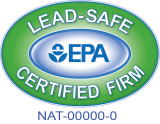Preparing For Hurricane Season 2019 in Texas
If there’s anything that has become common knowledge in recent years, it’s that hurricanes are getting much bigger and stronger each season. They’re also forming faster, so it’s not unusual to see several of them racing back-to-back towards a specific area. 2017 alone brought Harvey in Texas, Irma in Florida, and Maria in Puerto Rico. All three devastated thousands of homes and flooded entire towns. Therefore, it has become increasingly essential to hurricane-proof your home before hurricane season begins.
When is Hurricane Season in Texas?
Hurricane season is the same for everyone, regardless of geographical location. It starts on June 1 and continues until November 30. As a state located on the Gulf of Mexico, Texas is susceptible to greater damage.
How to Hurricane-Proof your Home
While sometimes it’s impossible to completely eliminate the risk of damage, there are several things you can do to reduce that risk.
1. Install impact-resistant windows and sliding doors.
These are especially important in hurricane-prone areas like Texas. They provide the highest level of protection to your home during a hurricane. As a bonus, they also reduce solar heat coming into your home, making your AC system more energy efficient.
2. Install hurricane shutters.
If impact windows are outside of your budget, still prioritize protecting your windows by installing hurricane shutters. While they are a little more inconvenient because you have to install and uninstall before and after a storm, they do protect your home from hurricane force winds and projectiles. Installation is relatively simple and could be completed by one person.
3. Clear debris from your front and back yards.
When getting your home hurricane-ready, it’s easy to overlook things outside. If you have a swimming pool, place patio furniture underwater to keep it from blowing away. Place all tools, lawnmowers, barbecues, the kids’ playground, garbage cans, recycling bins etc, in a secure shed, garage, or storage unit to prevent them from becoming projectiles.
4. Pack a bag of essentials.
Keep at hand a first aid kit, as well as at least a three or four-day supply of batteries, non-perishable foods, water, flashlights or lanterns, cash, candles, medications, wet wipes, toilet paper, and fully charged backup batteries for your cell phones. Also, keep a radio in order to stay informed of what’s going on even when the power goes out.
5. Keep your landline.
While these may seem like a throwback, the reality is it’s common for cell phones to not receive any service signal after a particularly strong storm (such as a category 4 or 5). Having a landline ensures you’re able to call for emergency services such as 911 should the need arise.
6. Purchase a portable generator.
Even if it’s a small one, having a generator ensures you’re able to at least keep your refrigerator running. Ice becomes an invaluable asset when everyone has been without power for several days.
7. Anchor your air conditioner’s condenser unit.
Modern construction codes require them to be already anchored. However, if you own an older home, you’ll have to do it yourself. Contact an HVAC professional to help you do it. Once anchored, cover it with a tarp or board it up.
It’s also important to remember that the time to complete these tasks is now, when the sun is shining and you have time to go online and do some research. Once a hurricane warning has been issued, essential goods sell out in minutes.
Get a Free Quote Today!
Preserve your home’s structural integrity and save money long-term by letting us help you.
At Allied, Siding and Windows, we’ve been proudly serving Houston, Austin and Dallas for over 30 years. Let us inspect your home and conduct a comprehensive hurricane-proofing assessment. Contact us for more information about our services or stop by one of our showrooms!










